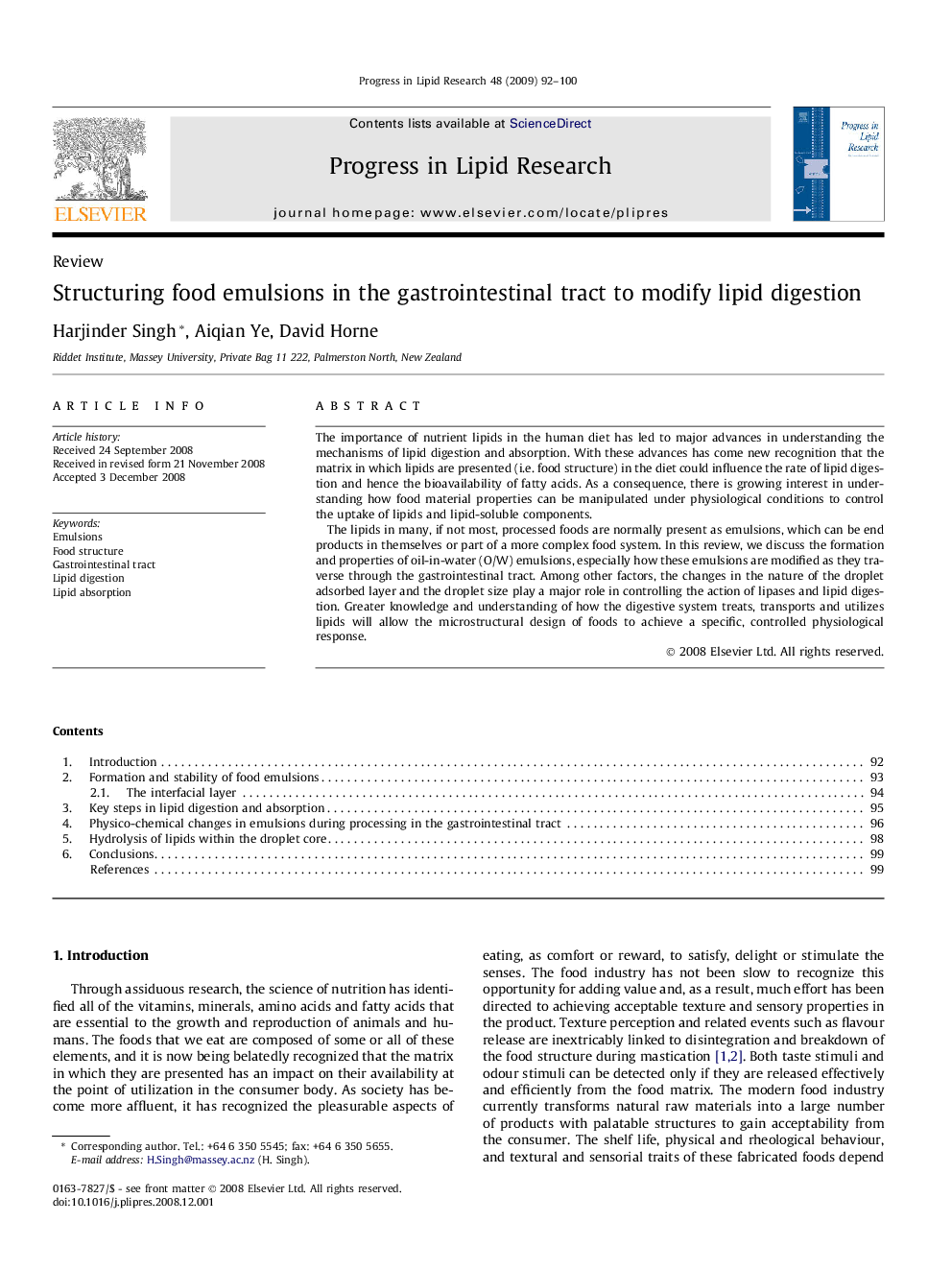| Article ID | Journal | Published Year | Pages | File Type |
|---|---|---|---|---|
| 2019313 | Progress in Lipid Research | 2009 | 9 Pages |
The importance of nutrient lipids in the human diet has led to major advances in understanding the mechanisms of lipid digestion and absorption. With these advances has come new recognition that the matrix in which lipids are presented (i.e. food structure) in the diet could influence the rate of lipid digestion and hence the bioavailability of fatty acids. As a consequence, there is growing interest in understanding how food material properties can be manipulated under physiological conditions to control the uptake of lipids and lipid-soluble components.The lipids in many, if not most, processed foods are normally present as emulsions, which can be end products in themselves or part of a more complex food system. In this review, we discuss the formation and properties of oil-in-water (O/W) emulsions, especially how these emulsions are modified as they traverse through the gastrointestinal tract. Among other factors, the changes in the nature of the droplet adsorbed layer and the droplet size play a major role in controlling the action of lipases and lipid digestion. Greater knowledge and understanding of how the digestive system treats, transports and utilizes lipids will allow the microstructural design of foods to achieve a specific, controlled physiological response.
